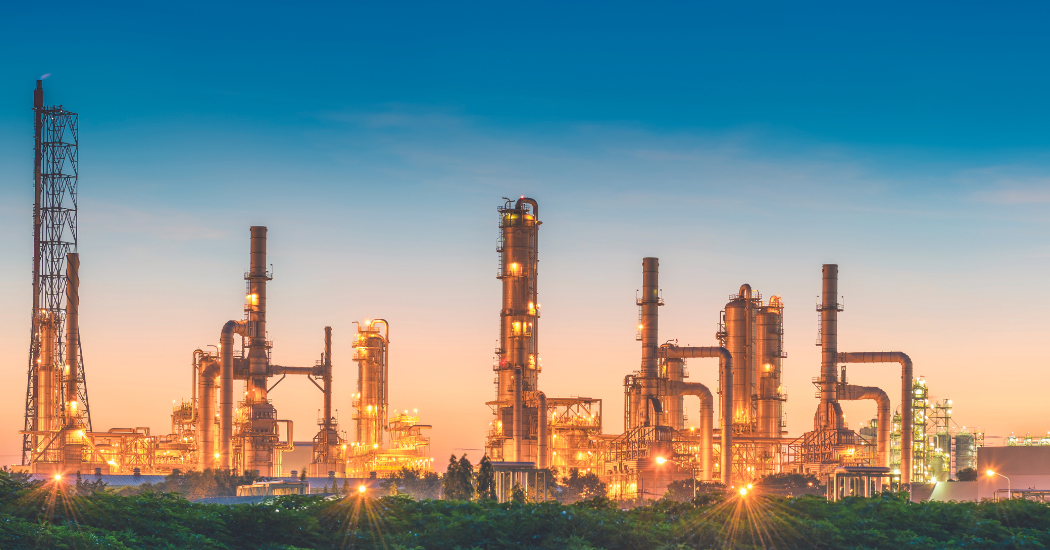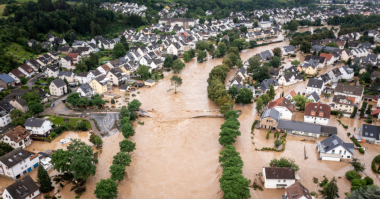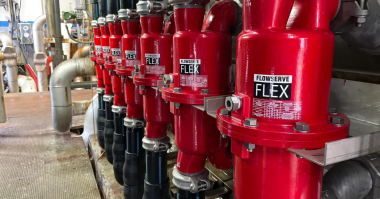As the pressure increases for companies to decarbonize, become more environmentally friendly, and to improve efficiency and reliability from existing operations there is a growing demand to identify opportunities that present clear energy advantages.
While the conversation about energy efficiency is nothing new, Flowserve Corporation is taking action. It is creating tangible programs to assist companies to make a smooth and effective energy transition.
“There is an ongoing transition for a lot of our customers to think about new spaces in a more carbon-friendly way,” says Flowserve Vice President Rob Vitello, who runs the company’s new Energy Advantage Program. “That requires them to build new parts to their plants, and embrace emerging technologies by engaging in new projects which help them decarbonize. When making the energy transition, there are two pieces—emerging technologies and the Energy Advantage which enables existing operations to reduce energy consumption.”
Flowserve launched its Energy Advantage Program in early 2022 after testing the viability of the program with several customers. The program is a holistic flow control approach designed to help operators reach their carbon reduction goals and lower the total cost of ownership.
It provides customers with Flowserve engineering expertise, a systematic data-driven evaluation process, and a complete offering of products and services that can increase energy efficiency through optimization of pump and valve power consumption, reduced carbon emissions, and improved plant productivity and reliability while providing operational savings.
“We consult with our customers, assess their existing flow loops, and show them how to improve the energy intensity of their current operations,” Vitello explained. “You can take credit for lower carbon reduction because less energy is used. As you require less energy to run the equipment, you also benefit from an improved cost position. In conjunction with that, we look at other areas where we can help with cost improvement such as improving reliability, creating better predictive maintenance practices, and programs to reduce greenhouse gases like flare gas recovery systems.”
The Flowserve idea of energy transition includes two distinct parts:
- Helping customers become more efficient with their existing operations and more cost effective with what they do today through the Energy Advantage Program.
- Helping customers as they expand into existing and emerging technologies, such as hydrogen, carbon capture, plastics recycling, energy storage, and renewable fuels.
But Flowserve doesn’t wait on the customer to come to them. “We proactively approach our customers on the energy advantage front because that may not be something they are currently thinking about,” Vitello said. “We explain there are things that they can do today to make a short-term impact. In the long term, we can help to improve sustainability by improving their cost position, but we can also bring short-term solutions to the table in a very cost-effective way.”
For example, a company may want to cut their carbon emissions by 30 to 40 percent by 2030 and become carbon neutral by 2050. With the first goal only seven years away, it is important to have some major programs in place to deliver carbon reduction results in such a short period of time.
The longer-term play is to generate hydrogen instead of steam, for example. But that is costly and will take time to mature. Another option is carbon capture.
“Carbon is captured and either stored or used in another way,” Vitello explained. “Infrastructure is required to be able to accomplish that. And there are not a lot of re-use opportunities for carbon. So, an infrastructure is developed and perhaps it’s combined with other companies to share the cost and build a network of pipelines and storage caverns. Still, these solutions take time. They require several years to plan and engineer and build before seeing any benefit.
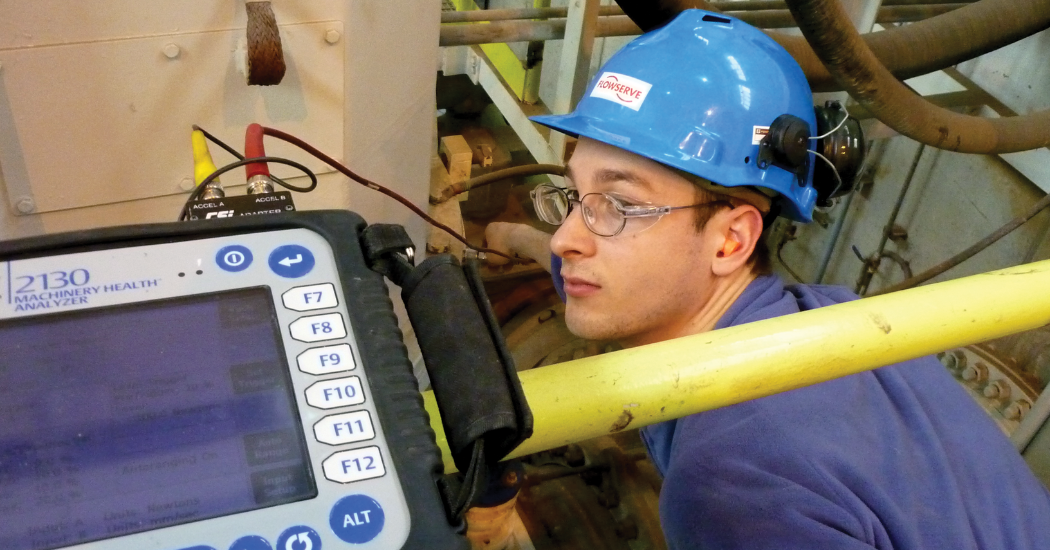 “While we support those technologies as well, we can go in today and maybe not necessarily attack every single pump or flow loop within their operation, but we can start by looking at the top 10 percent of their power consumers and break that down into a two-to-five-year program. Then we can systematically begin to engineer solutions with payback periods that are very attractive.”
“While we support those technologies as well, we can go in today and maybe not necessarily attack every single pump or flow loop within their operation, but we can start by looking at the top 10 percent of their power consumers and break that down into a two-to-five-year program. Then we can systematically begin to engineer solutions with payback periods that are very attractive.”
Generally, Flowserve can provide returns on investment in the 30-to-40 percent range. This can be done as a complement to other operational activities or site level programs in a very systematic way. By the time a company begins to achieve carbon capture, they actually won’t have to store as much carbon.
“We’ve been doing this for decades,” Vitello said. “We upgrade equipment all the time—not always for efficiency. Normally, it’s for reliability or production enhancement, but now there is a platform for an intensive focus in the area of energy efficiency.”
Flowserve’s Energy Advantage Program helps customers achieve their energy transition through:
- Identifying opportunities within existing plants and processes for immediate sustainability impact.
- Implementing value-added solutions that deliver higher system safety, reliability, and production certainty.
- Collaborating with experienced partners with the know-how and expertise to meet carbon reduction and operational cost challenges.
“Customers have not traditionally spent the money on efficiency, with a few industry exceptions like pipelines,” Vitello explained. “The costs of energy in a pipeline are greater than 70 percent of the operating costs. Energy efficiency has not been at the forefront for many other industries. Now, there is an opportunity to re-engage customers. For example, in a refinery, 50 percent of the electrical energy usage is from pumps. If you can improve the efficiency of those pumps by a meaningful percentage (like 10 or 20 percent), that can make a significant contribution to your bottom line.”
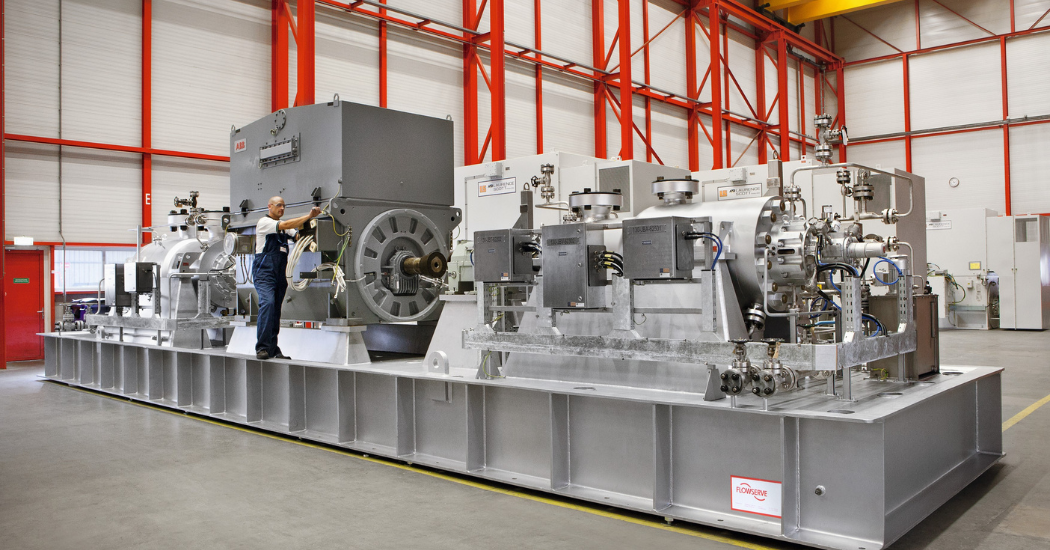 Flowserve’s Energy Advantage program creates an opportunity to proactively discuss these concepts and possible solutions with the customer. A dedicated team of experienced Flowserve engineers support data collection, and then analyze the complete flow loop (including pumps and control valves) with a proprietary analytical software.
Flowserve’s Energy Advantage program creates an opportunity to proactively discuss these concepts and possible solutions with the customer. A dedicated team of experienced Flowserve engineers support data collection, and then analyze the complete flow loop (including pumps and control valves) with a proprietary analytical software.
“All this brings a higher value of savings than ever seen before,” Vitello said. “This should be a focus for our customers because it can bring short-term results, it’s a better value proposition, and a better return on investment.”
However, companies cannot achieve their energy transition by upgrading only their pumps.
“It’s an overall mindset,” he said. “We can help them with energy savings, but the entire system should be a focus when it comes to realizing the full energy advantage. We elevate the understanding of what a company’s equipment efficiency can mean. But our domain expertise is in pump efficiency. We have a conversation with the customer about how other projects like hydrogen and carbon capture are necessary elements. They may also be looking at heat recovery within their systems, and other areas to prevent waste and optimize energy efficiency.”
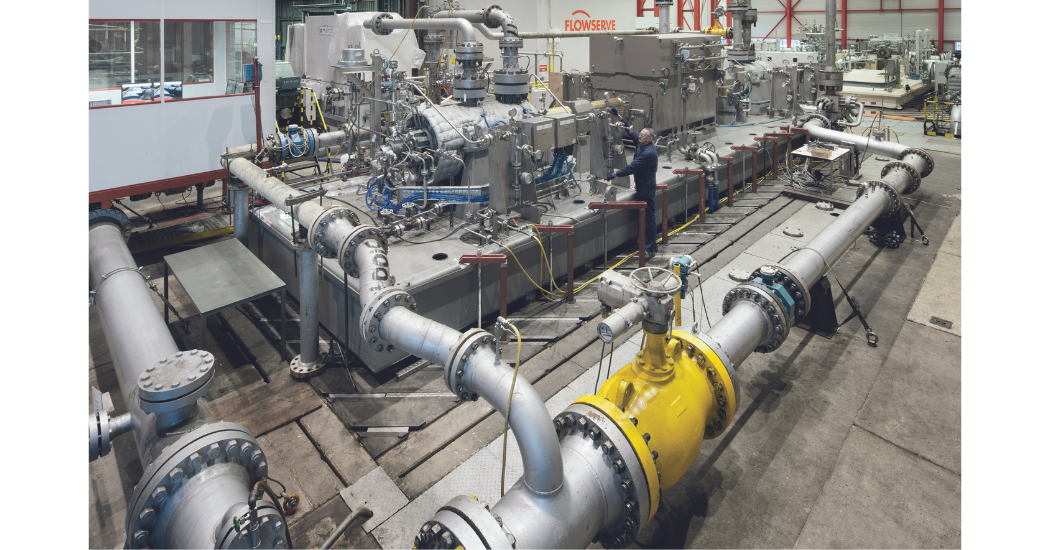 The Energy Advantage Program is comprised of three distinct offerings – Efficiency Advantage which is a holistic flow control approach aimed at improving efficiency, Carbon Advantage which introduces a variety of solutions to reducing carbon footprint and greenhouse gas emissions, and Cost Advantage which offers increased equipment reliability and predictive maintenance IoT capabilities to minimizing cost.
The Energy Advantage Program is comprised of three distinct offerings – Efficiency Advantage which is a holistic flow control approach aimed at improving efficiency, Carbon Advantage which introduces a variety of solutions to reducing carbon footprint and greenhouse gas emissions, and Cost Advantage which offers increased equipment reliability and predictive maintenance IoT capabilities to minimizing cost.
Besides focusing on improving pump flow loop efficiency, the Efficiency Advantage Program also leverages power recovery turbines for converting energy that would otherwise go to waste into useful work.
Reducing hydrocarbon fugitive emissions represents one of the most significant greenhouse gas reduction opportunities for the energy industry. The Carbon Advantage Program offers a range of tailored solutions such as seal and seal system upgrades, zero-emission compressor seal and valve offerings, drivetrain electrification and flare gas recovery systems for reducing environmental impact from harmful emissions.
Operational efficiency stems from high equipment reliability and increased production certainty that enables more effective use of plant resources and reduced maintenance costs. The Cost Advantage Program provides comprehensive solutions and services focused on increasing asset reliability and optimizing operational expenses.
“When we look at systems and analyze certain processes, we look for where excess pressure being built,” Vitello explained. “For example, a scrubbing system tends to generate a lot of excess pressure, and today many customers waste that energy. We can help them recover that energy. We can either capture it in terms of electrical energy that can be used to drive equipment, or it can be sold back to the grid.” Flowserve’s Energy Advantage Program has generated increased interest from the industry.
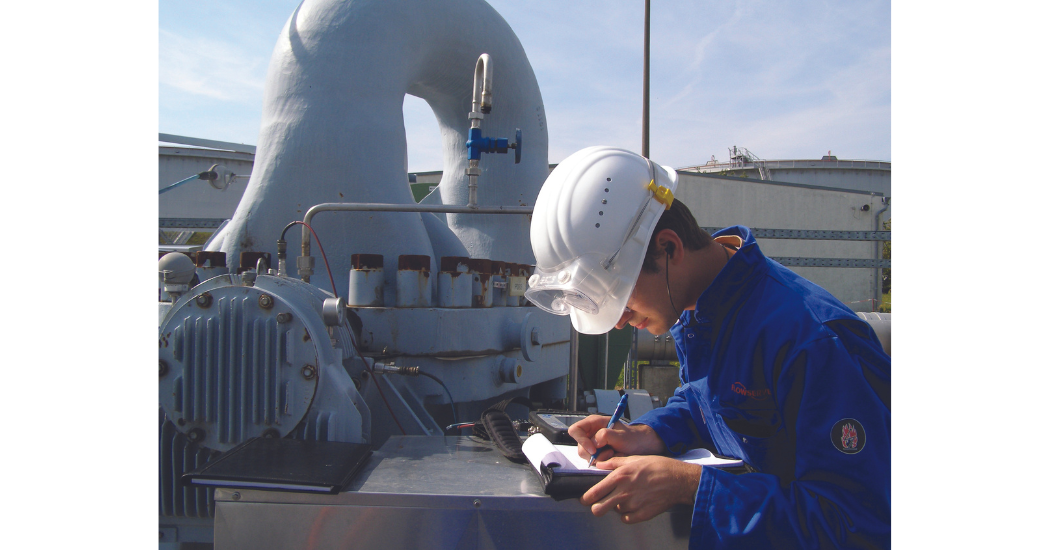 “There is no general understanding that this type of program offers as much opportunity as it does,” Vitello said. “We have validated with many customers that this is large enough in terms of carbon reduction impact to make sense for them. Our intent is to blend this in with something else the customer is working on, or to discover whether there is enough value to replace another program that isn’t performing. There seems to be a general interest with most customers to pursue these energy opportunities. They know it’s the right thing to do. Then they need to decide who can drive the programs within their company and how to fit it in with everything else.”
“There is no general understanding that this type of program offers as much opportunity as it does,” Vitello said. “We have validated with many customers that this is large enough in terms of carbon reduction impact to make sense for them. Our intent is to blend this in with something else the customer is working on, or to discover whether there is enough value to replace another program that isn’t performing. There seems to be a general interest with most customers to pursue these energy opportunities. They know it’s the right thing to do. Then they need to decide who can drive the programs within their company and how to fit it in with everything else.”
The program is part of Flowserve’s overall strategy of 3Ds.
- Diversify – Traditionally, 50 to 60 percent of Flowserve revenue comes from oil and gas. “It’s important for us to think in terms of diversification,” Vitello said. “We definitely want to serve those customers, but we are also looking elsewhere to understand what the new economy looks like.”
- Decarbonize – The Energy Advantage program is all about getting involved in these emerging technologies, Vitello said.
- Digitize – As one of the world’s largest pump manufacturers, Flowserve has a lot of equipment installed globally, both pumps and valves. “Customers want to learn more about how to make their equipment smarter,” he said. “Our RedRaven product is a monitoring and predictive maintenance platform that we are blending in with other basic offerings to be able to push suggestions and decisions to the customers directly.”
According to Vitello, achieving a smooth energy transition requires collaboration.
“We want to work alongside our customers and show them how we can add value in a very inobtrusive way,” he explained. “The role of carbon reduction for our customers has accelerated to the point of relevance in the past one or two years. We wanted to distinguish and create a small team that can truly understand our customers’ value proposition, drive the analytics, and structure a program for success. The energy transition represents an opportunity—not just as a headwind. Adversity sometimes requires you to think differently, and that’s what we are hoping to stimulate as we work with our customers.”
Once customers come on board with the Energy Advantage Program, the Flowserve team serves as their guide to help them create a plan to reach their energy goals. They are also identifying other partnerships, like with motor and automation companies, to help customers with an overall energy program that utilizes smarter systems.
“Electrical energy is only going to go up in cost,” Vitello said. “And the demand for power will continue to rise, as well. As you improve the efficiency, the opportunity is to get financial payback along with building a more sustainable business. All of these goals are part of the Energy Advantage Program.”
For more information about Flowserve’s Energy Advantage Program: https://www.flowserve.com/en/energy-transition/energy-advantage-program/
 About the Author:
About the Author:
Michelle Segrest is president of Navigate Content, Inc., and has been covering the industrial processing industries since 2008. Reach her at michelle@navigatecontent.com.

